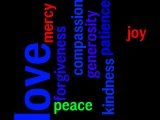Readings: Wis 18:6-9; Heb 11:1-2, 8-19; Lk 12:32-40
The second reading this morning from the Letter to the Hebrews contains one of the most famous descriptions of faith in the entire New Testament: "Faith is the realization of what is hoped for and evidence of things not seen." This definition contains three aspects: what is hoped for, but still unseen, with only partial evidence for support. What is hoped for here is a future life with God in heaven. That’s made clear later on in the Hebrews reading. It’s also what we pray for so often in the liturgy, especially in the closing prayers of the Eucharist. Last Sunday we prayed: "Protect us with your love and prepare us for eternal redemption." The Sunday before that was: "May this gift bring us closer to our eternal salvation." We will hear the same theme in today’s closing prayer. Christian faith is ultimately hope for a future life with God.
That was very clear to all of us who can remember the pre-Vatican II Catholic Church. In those days all of life on this earth was simply a testing period, a preparation and a challenge to get to heaven. For good Catholics the challenge was always to avoid the snares of sin and the wiles of the devil, which were lurking everywhere. The effort to avoid those dangers required constant vigilance and penitence. I remember those boyhood days at St. Mary’s grade school so very well. While I enjoyed my childhood very much, growing up Catholic in the 1950s was far, far different than it is today.
Because everything drastically changed with Vatican II. Now, let’s be clear, the Council never denied that faith is hoping for a future life with God. It affirmed it strongly They simply said: that’s not the whole picture of what Christian faith includes. Christian faith encompasses other major areas as well as getting to heaven. Christian faith is also about building a just and peaceful society and world. That point was made powerfully in the Constitution on the Church in the Modern World. There Christian faith is seen as a commitment to build up a just world and bring it to fulfillment. (G&S # 93) In the forty-five years since that document many Catholics have heard and responded strongly to that message. Another major aspect of Christian faith that the Council also accented was appreciating and enjoying the beauty and goodness of God’s creation. A full Catholic Christian faith includes a true savoring of the good things that God has given to us. These three elements are all essential parts of what a full Christian faith should encompass.
That’s all beautifully said on paper, but a lot more difficult to live out in practice. I suspect that a lot of the confusion and turmoil in the Catholic Church in the years following Vatican II can be attributed to the challenges of trying to put these three factors together. There were many Catholics who couldn’t understand the Church getting involved in social justice and peace issues. They got very angry when they saw priests and sisters marching in the streets for civil rights or marching to protest the Vietnam war. Other Catholics, thoroughly imbued with the pre-Vatican II Catholic penitential ethos, found it very hard to savor or enjoy anything in God’s creation. They had been trained for so long to be suspicious of any pleasure. And, at the other end of the spectrum, some of those Catholics who did take up social justice issues got into them so deeply they seemed to forget the faith as a hoping for a future life with God. All this has made for a volatile half century since the close of the Council. That turmoil continues today and shows no signs of abating.
In a real way Catholics are still struggling with the challenge of putting together those three dimensions of faith. This Eucharist provides a good starting point for each of us to ask ourselves concretely: how alive is my hope for a future life with God? What do I do to contribute to building a more peaceful and just world? Where do I savor and enjoy the beauty and goodness of God’s creation? In other words, how healthy is my faith?




No comments:
Post a Comment